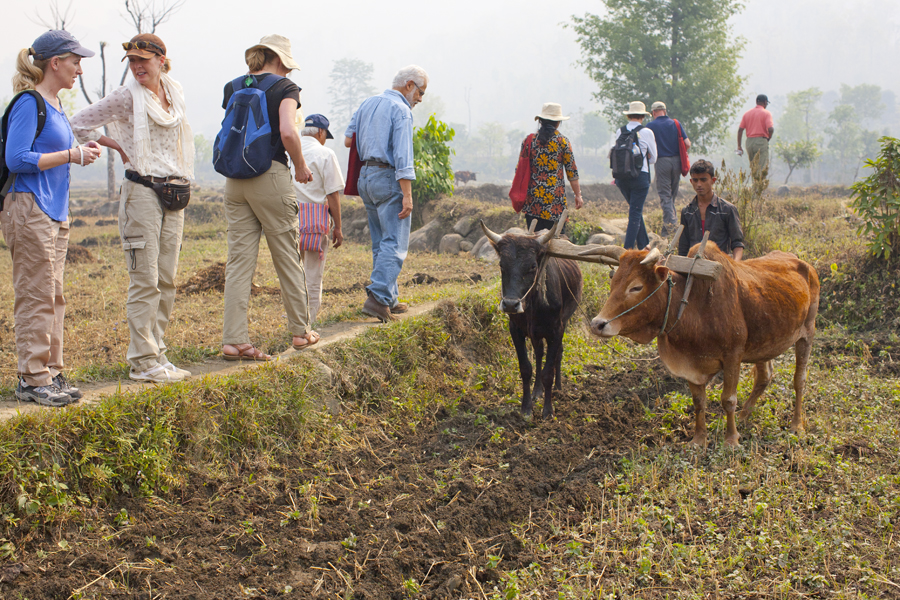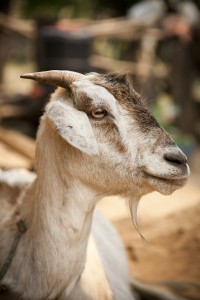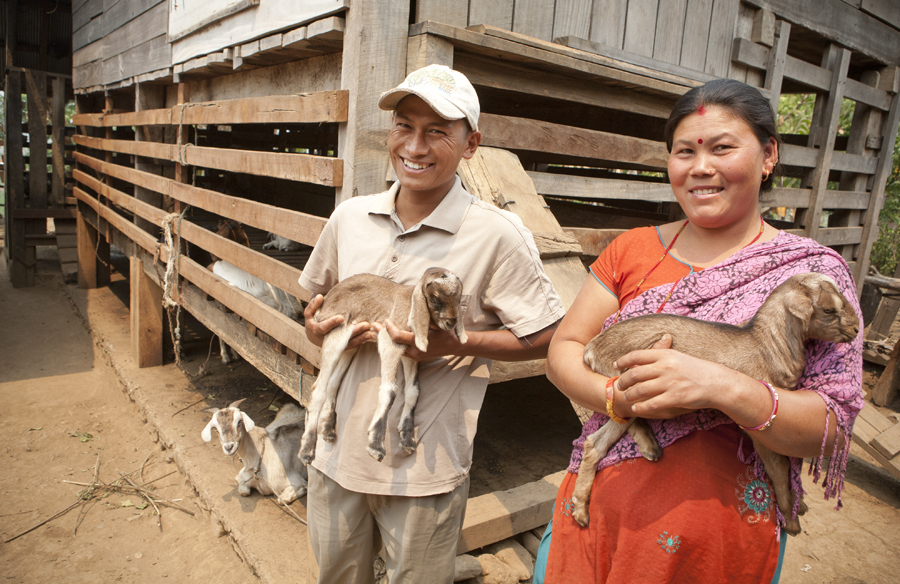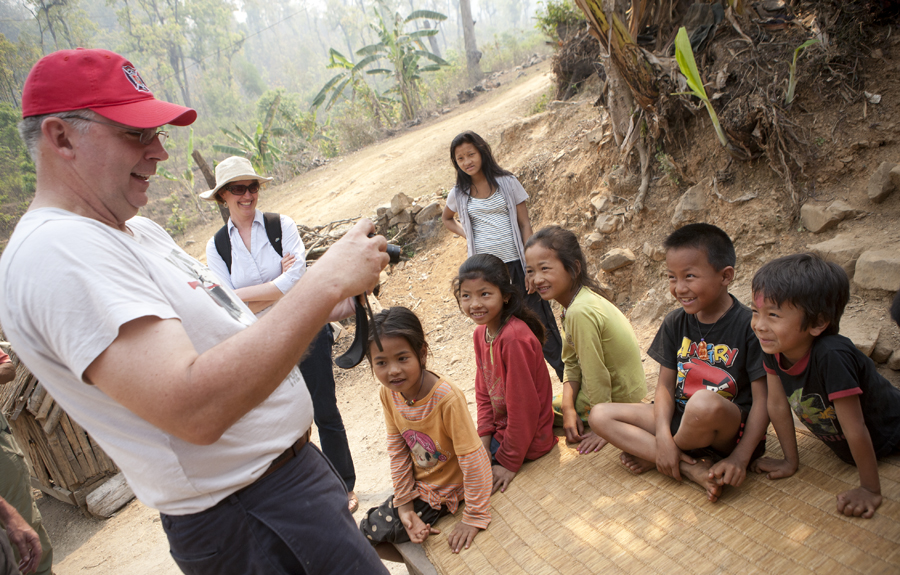 Heifer Board member Sandra Godden leaps river rocks on her way to the Heifer project village Shaktikhor, with member Efrain Diaz Arrivillaga close on her heels. Photo by Geoff Oliver Bugbee.
Heifer Board member Sandra Godden leaps river rocks on her way to the Heifer project village Shaktikhor, with member Efrain Diaz Arrivillaga close on her heels. Photo by Geoff Oliver Bugbee.SHAKTIKHOR VILLAGE, Nepal—You don't have to go far in the Chitwan region of Nepal to get a good look at a goat; they're everywhere you look. However, to see true innovation in the raising of goats for profit, Shaktikhor village is the place to be. It takes a bit of a stroll to get there, over a river and through farmers' rice and vegetable fields, but it's worth the trip.
 Heifer Board members and staff walk through fields being plowed on the way to a project visit. Photo by Geoff Oliver Bugbee
Heifer Board members and staff walk through fields being plowed on the way to a project visit. Photo by Geoff Oliver Bugbee Several Heifer Board and staff members are in Nepal this week visiting Heifer projects related to a new goat project that will eventually reach 138,000 farmers in 28 districts by 2016.
Several Heifer Board and staff members are in Nepal this week visiting Heifer projects related to a new goat project that will eventually reach 138,000 farmers in 28 districts by 2016.
Through this innovative project, Heifer aims to reduce live goat imports by 30 percent and milk by 10 percent in the same time frame.
In Shaktikhor, Heifer farmers continue their own experimentation, through what's called a farmer field school, to come up with the right combination of nutritional fodder, minerals, shelter and veterinary care to quickly produce the healthiest goats to be ready to take to market.
For farmers such as Niramala Magar and her husband Som Bahadur Magar, the project is paying off very well. Five years ago, Niramala received Heifer goats, and soon after her husband received animal health care worker training and now serves as an expert to help others in the community.
They started with only five does and now have more than 20, with a goal of having 50 in the next few years. Responding to a question from Heifer Board member Jay Whittmeyer, Som said that when he gets to that level, he believes he can employ others in the village to help him with the enterprise. He also is hopeful his young sons, now 10 and 8 years old, will follow in his footsteps in the goat-raising business.
 Som Bahadur Magar and wife Niramala Magar show off kids, one just a couple of days old, in Shaktikhor village. Photo by Geoff Oliver Bugbee
Som Bahadur Magar and wife Niramala Magar show off kids, one just a couple of days old, in Shaktikhor village. Photo by Geoff Oliver Bugbee"We had been raising goats for years and were not convinced we needed to plant fodder trees and use that method when we first heard about it," Som said. "Once we started thinking about commercial farming, we decided to test for ourselves what worked best. We have been very keen on calculating every input and benefit it gives. Through our own testing, we found it was definitely more beneficial to follow this advice and began to plant fodder trees."
The couple says despite all their success, a goat enterprise is not as easy as it looks. They have to take in consideration of pen space for the goats, feed, water and veterinary care, and then still find a way to get the best prices for their animals. Yet Som and Niramala are ready for any challenge. Som, with his village's cooperative, just opened a small market collection center and is getting out the word that every Tuesday anyone can come to the village to purchase goats.
"I feel it is my responsibility to get a better price for all goat farmers in this area," Som said.
 Heifer Board member Jay Whittmeyer, who is fluent in Nepalese, jokes with children in Shaktikhor to get them to smile for a photo. Photo by Geoff Oliver Bugbee
Heifer Board member Jay Whittmeyer, who is fluent in Nepalese, jokes with children in Shaktikhor to get them to smile for a photo. Photo by Geoff Oliver Bugbee